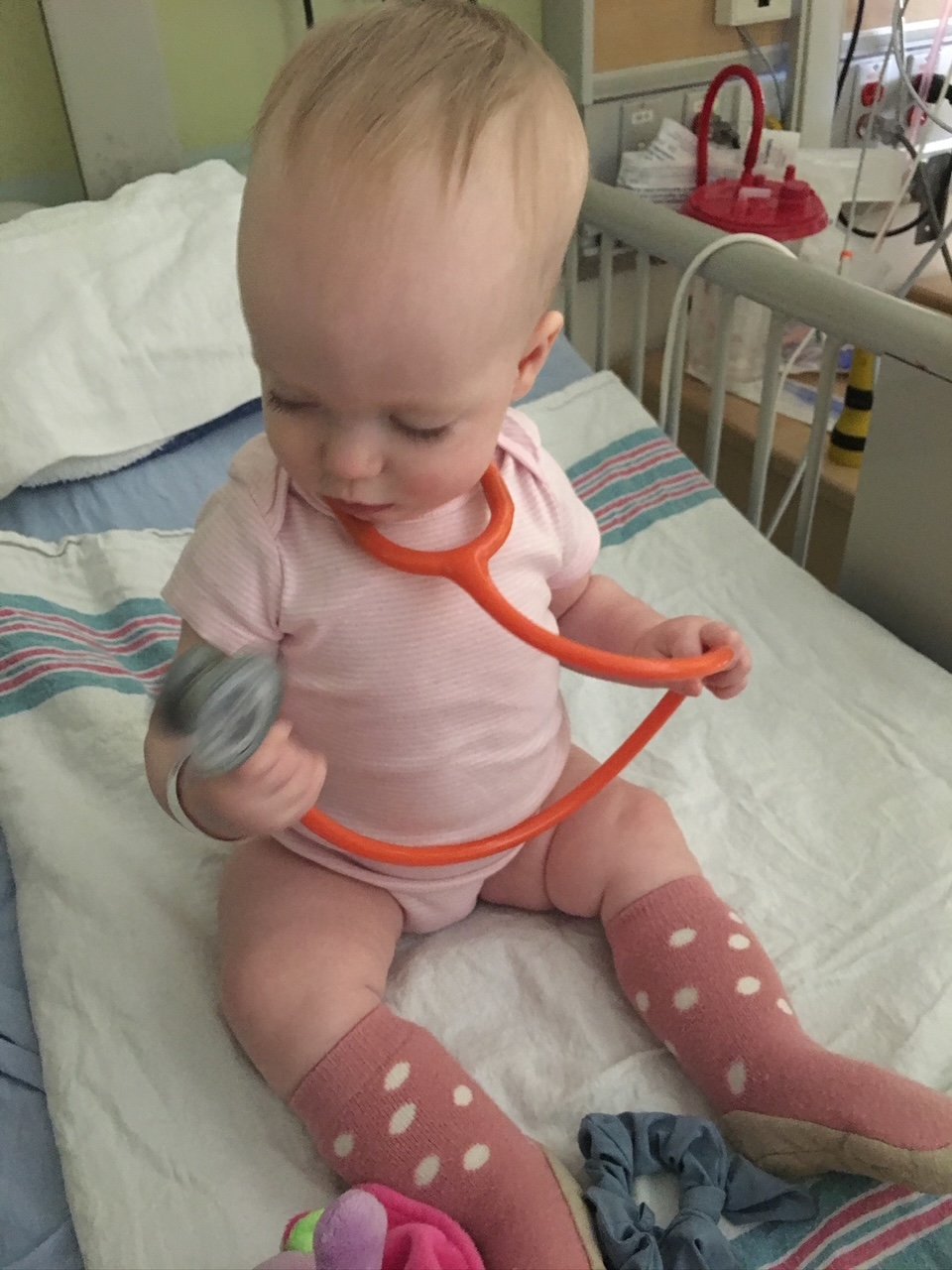Chapter 8: grieving loss
Friday night. The hardest night of my life.
The nurse brought me a banana popsicle.
I hadn’t eaten since breakfast, and I don’t think anyone knew what else to offer the mother of a child being evaluated for a brain tumour. I took it in silence. I sat in the hallway for a moment, cold, fluorescent light buzzing over my head, Evelyn curled into my chest, her IV line trailing behind her like a leash on our reality.
That evening, a kind nurse did something small—but it was everything. She swapped out the crib in our semi-private room for a real bed. Because I co-slept. Because Evelyn would not tolerate the crib. Because I couldn’t—wouldn’t—put her down. And so, for the first time in a week of sterile sterility, I climbed into a real bed with my baby and wrapped my arms around her like a life raft.
The steroids were running through her system now. A high-dose pulse. They’d warned me: discomfort, restlessness, maybe even rage. But I wasn’t ready for what it did to her. Evelyn whimpered all night. She couldn’t settle. Couldn’t sleep. Couldn’t do anything but breastfeed, over and over, for the comfort it gave her. And I, in my own way, couldn’t sleep either.
Not because of the discomfort. Not because of the beeping monitors or hallway noises or fluorescent flickers.
Because of what was in my head.
By midnight, I had already gone too far down the path.
The MRI from that morning had confirmed everything we feared. The lesion was still there. Worse than before. Thickening of the right-sided superior colliculus. Mass effect on the aqueduct. An elevation of choline and myoinositol—a spectroscopic signature consistent with glioma.
Tumour. Low-grade, they said.
But “low-grade” doesn’t mean harmless when it sits inside the midbrain.
That’s where it was: periaqueductal grey, creeping into the cerebral peduncle, and brushing against the thalamus. A place that surgeons do not operate on. A place where biopsy comes with the risk of death or paralysis. A place that meant treatment, if needed, would be radiation or chemotherapy—if we even got the chance.
It was a Friday night, and my baby was seven months old, and I knew—deep down—that she wasn’t going to make it.
I don’t know when exactly it happened, but at some point in the early hours, I accepted it.
I stopped her RESP contributions that night. Right there on my phone. Because why save for a future that wouldn’t come?
I told myself I would leave. When she died, I would disappear. Not in a dramatic way—just... go. Change cities. Leave my job. Start over somewhere that didn’t carry her absence in every sidewalk crack.
It was just a matter of time. We had to go through the motions. Pretend to wait. But I knew the ending already.
I didn’t cry. Not that night. Something in me had already calcified. And I would not cry again—not for years.
They called it “probable diffuse midline glioma” in the later reports. One of the most feared diagnoses in pediatric neuro-oncology. An incurable brainstem tumour. Some children survive six months. Some twelve. Very few longer.
Even when the language was vague, the implication was not. “Mitotic etiology.” “Choline/NAA reversal.” “No blooming, no necrosis, but progressive.” Terms designed to dance around death without saying it.
But in that bed, with Evelyn twitching beside me from the steroids, I started writing her eulogy in my mind.
Who she was. What she liked. The way she always went cross-eyed when trying to smile. The way she liked to hold my necklace while she nursed.
And I imagined the worst.
What would happen to me? To us?
Would John and I survive it?
Would my other daughter grow up in the shadow of a ghost? What would happen to Emma—how could she even grasp that her baby sister died?
Would I ever be whole again?
There’s no way to answer those questions when you’re still inside them. But that night, I stopped hoping for a miracle and started preparing for the end.
I didn’t know it then, but something was already shifting.
In her body. In her brain.
Something that no one saw coming. Something that would eventually defy the radiology reports and shake the foundation of our assumptions.
But not that night.
That night, there was only quiet.
And a banana popsicle.
And a baby on steroids.
And a mother with grief already seated like stone in her chest.
